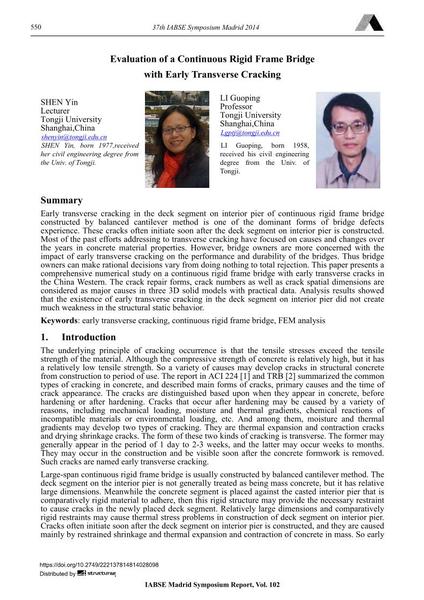Evaluation of a Continuous Rigid Frame Bridge with Early Transverse Cracking

|
|
|||||||||||
Bibliographic Details
| Author(s): |
Yin Shen
Guoping Li |
||||
|---|---|---|---|---|---|
| Medium: | conference paper | ||||
| Language(s): | English | ||||
| Conference: | IABSE Symposium: Engineering for Progress, Nature and People, Madrid, Spain, 3-5 September 2014 | ||||
| Published in: | IABSE Symposium Madrid 2014 | ||||
|
|||||
| Page(s): | 550-557 | ||||
| Total no. of pages: | 8 | ||||
| Year: | 2014 | ||||
| DOI: | 10.2749/222137814814028098 | ||||
| Abstract: |
Early transverse cracking in the deck segment on interior pier of continuous rigid frame bridge constructed by balanced cantilever method is one of the dominant forms of bridge defects experience. These cracks often initiate soon after the deck segment on interior pier is constructed. Most of the past efforts addressing to transverse cracking have focused on causes and changes over the years in concrete material properties. However, bridge owners are more concerned with the impact of early transverse cracking on the performance and durability of the bridges. Thus bridge owners can make rational decisions vary from doing nothing to total rejection. This paper presents a comprehensive numerical study on a continuous rigid frame bridge with early transverse cracks in the China Western. The crack repair forms, crack numbers as well as crack spatial dimensions are considered as major causes in three 3D solid models with practical data. Analysis results showed that the existence of early transverse cracking in the deck segment on interior pier did not create much weakness in the structural static behavior. |
||||
| Keywords: |
FEM analysis early transverse cracking continuous rigid frame bridge
|
||||

